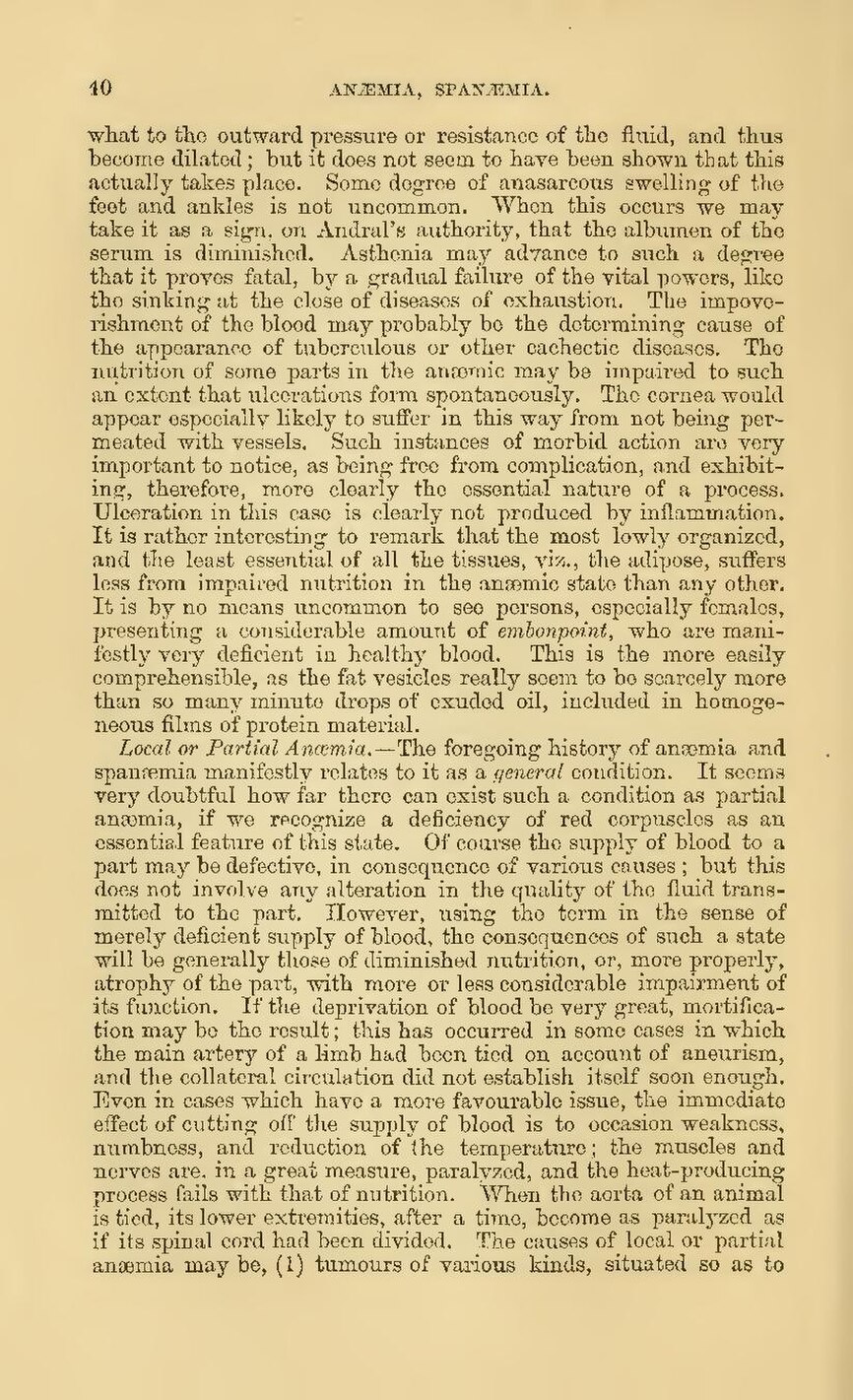40 ANJEMIA, SPANAIMIA.
what to the outward pressure or resistance of the fluid, and thus become dilated ; but it does not seem to have been shown that this actually takes place. Some degree of anasarcous swelling of the feet and ankles is not uncommon. Whon this occurs we may take it as a sign. on Andral’s authority, that the albumen of the serum is diminished. Asthcnia may advance to such a degree that it proves fatal, by a gradual failure of tho vital powers, ‘Tile tho sinking at the close of diseases of exhaustion. The impoye- rishmont of the blood may probably be the determining cause of the appearance of tuberculous or other cacheetic diseases. The iutrition of some parts in the anemic may be impaired to such an extent that ulecrations form spontancously, The cornea would appear especially likely to suffer in this way from not being per~ meated with yessels. Such instances of morbid action are very important to notice, as being free from complication, and exhibit- ing, therefore, more clearly the ossential nature of a process. Uleeration in this case is clearly not produced by inflammation. It is rathor interesting to remark that the most lowly organized, and the least ol of all the tissues, vin, the adipose, suffers less from impaived nutrition in the angmic state than any other. It is by no means uncommon to seo persons, especially fomalos, presenting a considerable amount of embonpoiat, who are mani- festly very deficient in healthy blood. This is the more easily comprehensible, as the fat vesicles really seem to bo scarcely more than so many minute dreps of exuded oil, included in homoge- neous films of protein material.
Local or Partial Ancemia.—The foregoing history of anwmia and spanfemia manifestly relates to it as a general condition. It seems very doubtful how far there can exist such a condition as partial anemia, if we recognize a deficiency of red corpuscles as an essential feature of this state. Of course the supply of blood to a part may be defective, in consequence of various causes; but this does not involve any alteration in the quality of the fluid trans- mitted to the part. Ylowever, using tho term in the sense of merely deficient supply of blood, the consequences of such a state will be generally those of diminished nutrition, or, more properly, atrophy of the part, with more or less considerable impairment of its function, H'the deprivation of blood be very great, mortifica- tion may be the result; this has occurred in some cases in which the main artery of a limb had been tied on account of aneurism, and the collateral circulation did not establish itself soon enough, Tiven m cases which have a more favourable issue, the immediato effect of cutting off the supply of blood is to oceasion weakness, numbness, and reduction of the temperature; the muscles and nerves are. In a great measure, paralyzed, and the heat-producing process fails with that of nutrition. When the aorta of an animal is tied, its lower extremities, after a time, become as paralyzed as if its spinal cord had been divided. ‘The causes of local or partial anemia may be, (1) tumours of various kinds, situated so as to �
